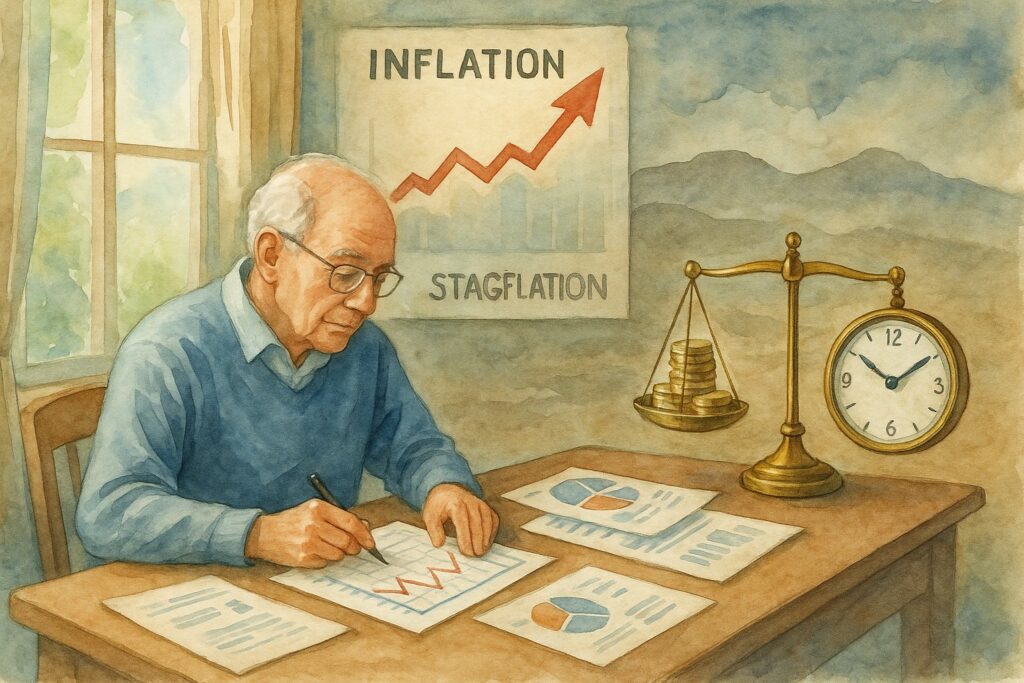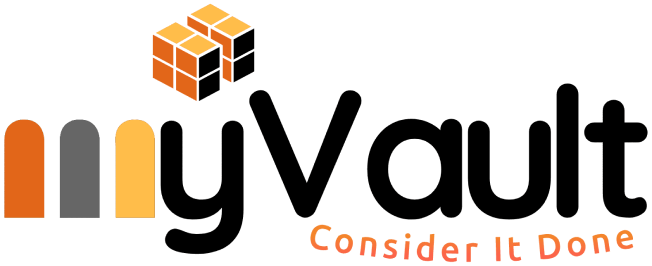
Economic downturns often force organizations to reassess how they keep valuable employees engaged and committed. When budgets tighten, salary increases and bonuses may not be possible, but retention does not have to suffer. Non-monetary incentives, flexible scheduling, and targeted professional development can maintain loyalty and performance without increasing payroll costs.
Employees often value autonomy, skill growth, and a supportive work environment as much as financial rewards. Flexible scheduling allows them to manage personal and professional responsibilities more effectively. Professional development opportunities show a long-term investment in their careers, while recognition and meaningful work strengthen their connection to the organization.
By combining these strategies, companies can create a stable and motivated workforce even in challenging times. The focus shifts from competing on pay alone to building a workplace culture that supports, develops, and values its people.
Key Takeaways
- Retention is possible without relying solely on financial incentives
- Flexibility and skill development strengthen employee commitment
- A supportive culture can sustain performance during economic challenges
Understanding Staff Retention During Economic Challenges

Economic instability can influence employee behavior, workplace morale, and organizational priorities.
Shifts in job security, workload distribution, and career development opportunities often determine whether employees choose to stay or leave.
Impact of Economic Downturns on Employee Turnover
During a downturn, companies may reduce budgets, freeze hiring, or restructure teams.
These changes can increase workloads for remaining staff, leading to stress and burnout.
Some employees stay due to fewer job opportunities, but others may leave if they perceive better stability elsewhere.
Layoff fears and unclear communication from leadership often drive voluntary turnover.
Industries dependent on discretionary spending or cyclical demand tend to see higher attrition.
In contrast, essential service sectors may retain staff more easily but still face engagement challenges.
Common factors influencing turnover in downturns:
- Job insecurity and uncertainty about the company’s future
- Reduced career growth opportunities
- Increased workloads without corresponding support
- Declining workplace morale
Key Drivers of Staff Retention
Retention improves when employees feel valued, supported, and connected to the organization’s goals.
Clear communication from leadership helps reduce uncertainty and build trust.
Non-monetary incentives, such as flexible scheduling, can be as impactful as financial rewards.
Professional development opportunities signal long-term investment in employees, even when budgets are tight.
A supportive work culture that recognizes contributions and offers autonomy strengthens loyalty.
Employees are more likely to stay when they see a path for growth and skill development.
Effective retention approaches include:
- Transparent communication about business performance and plans
- Flexible work arrangements to support work-life balance
- Targeted training programs to build skills for current and future roles
- Recognition systems that highlight individual and team achievements
Risks of High Attrition in Tough Times
High turnover during economic challenges can disrupt operations and reduce institutional knowledge.
Replacing skilled staff is often more expensive and time-consuming when talent pools are limited.
Frequent departures can lower morale among remaining employees, creating a cycle of disengagement.
Clients and customers may notice service disruptions, affecting revenue and reputation.
Loss of experienced staff can also weaken internal mentoring and knowledge transfer.
In critical roles, gaps in expertise can delay projects and reduce productivity.
Potential consequences of high attrition:
- Increased recruitment and training costs
- Decline in service quality and customer satisfaction
- Reduced team cohesion and collaboration
- Slower recovery when economic conditions improve
Leveraging Non-Monetary Incentives for Retention

Employers can maintain staff loyalty by offering meaningful rewards that do not involve direct pay increases. These approaches focus on meeting employees’ professional and personal needs in ways that improve satisfaction, engagement, and commitment.
Recognition and Appreciation Programs
Consistent acknowledgment of employee contributions can strengthen retention. Public recognition, such as highlighting achievements in team meetings or newsletters, reinforces a sense of value. Private appreciation, such as a direct email from leadership, can have equal impact.
Recognition should be specific rather than generic. For example, praising the completion of a complex project on time is more effective than a vague “good job.”
Some organizations use structured programs, such as:
- Peer-to-peer recognition platforms for ongoing feedback
- Monthly awards for outstanding performance
- Service milestones acknowledgment for tenure
Tracking participation and feedback helps ensure these programs remain relevant and meaningful.
Creating a Positive Work Environment
A workplace that supports trust, fairness, and open communication can reduce turnover. Employees are more likely to remain when they feel respected and included in decision-making processes.
Physical and digital workspaces also matter. Adequate equipment, comfortable environments, and reliable communication tools improve day-to-day experiences.
Practical steps include:
- Holding regular check-ins to address concerns promptly
- Encouraging collaborative problem-solving
- Ensuring policies are applied consistently
A positive culture is reinforced when managers model the behaviors they expect from their teams.
Opportunities for Increased Responsibility
Offering employees chances to take on new tasks or lead initiatives can boost engagement. This signals trust and investment in their capabilities.
Responsibilities should align with the employee’s skills and career goals. Assigning stretch projects can help them develop competencies without overwhelming them.
Examples include:
- Leading a small project team
- Managing a client relationship
- Overseeing process improvements
Providing clear expectations and support resources ensures these opportunities are seen as growth experiences rather than additional burdens. Tracking progress and offering feedback helps employees feel guided and valued in their expanded roles.
Flexible Scheduling as a Retention Strategy
Flexible scheduling allows organizations to adapt work hours and formats to meet employee needs while maintaining operational requirements. It can reduce turnover by accommodating personal obligations, improving morale, and creating a more attractive work environment for both current staff and potential hires.
Implementing Remote and Hybrid Work Options
Remote and hybrid work models give employees more control over where they complete their tasks. This can reduce commuting time, lower stress, and improve focus for roles that do not require constant on-site presence.
Employers often find that productivity remains stable or increases when staff work remotely part of the week. Clear communication tools, defined performance metrics, and secure technology are essential to support these arrangements effectively.
Hybrid schedules can be structured in different ways:
- Fixed days: Specific in-office and remote days each week.
- Rotating schedules: On-site presence based on project or team needs.
- Flexible choice: Employees select their on-site days within agreed limits.
A structured policy ensures fairness and consistency while still offering the flexibility employees value.
Job Sharing and Shift Flexibility
Job sharing allows two employees to split the responsibilities of one full-time role. This can be beneficial for those seeking reduced hours without leaving the workforce entirely. Clear task division and regular communication between partners are important for maintaining continuity.
Shift flexibility can include staggered start times, compressed workweeks, or the option to swap shifts. These arrangements are particularly useful in roles requiring physical presence, such as manufacturing, healthcare, or retail.
Examples of shift flexibility options:
| Option | Description | Benefit |
|---|---|---|
| Staggered hours | Different start/end times | Reduces peak-hour commuting |
| Compressed week | Full-time hours in fewer days | Longer consecutive rest periods |
| Shift swaps | Employee-led exchanges | Increases autonomy and coverage |
These options help retain staff who might otherwise leave due to rigid scheduling.
Supporting Work-Life Balance
Flexible scheduling supports work-life balance by allowing employees to manage personal responsibilities without sacrificing job performance. This can include school drop-offs, caregiving, or attending appointments during traditional work hours.
Employers can encourage balance by setting clear boundaries, such as limiting after-hours communication. This demonstrates respect for personal time and reduces burnout risk.
Offering flexibility signals that the organization values employee well-being. Over time, this can strengthen loyalty, reduce absenteeism, and improve overall job satisfaction.
Investing in Professional Development
Organizations that maintain employee skills and provide clear growth opportunities improve retention, even when budgets are tight. Focused training, structured guidance, and transparent advancement options give employees practical reasons to stay engaged and committed.
Upskilling and Reskilling Initiatives
Upskilling strengthens existing abilities, while reskilling prepares employees for different roles within the organization. Both approaches help staff adapt to changes in technology, processes, and market demands.
Effective programs start with a skills gap analysis to identify priority areas. Training can be delivered through short courses, online modules, or in-house workshops.
To maximize impact:
- Align training with organizational goals
- Offer flexible learning formats
- Track progress with measurable outcomes
By investing in targeted skill development, organizations reduce turnover caused by outdated competencies or limited career mobility.
Mentorship and Coaching Programs
Mentorship connects less-experienced employees with seasoned professionals who can offer guidance, feedback, and industry insight. Coaching focuses on specific performance goals and skill-building.
A structured program typically includes:
- Clear objectives for both mentor and mentee
- Regular check-ins to track progress
- Defined duration to maintain focus
These programs build trust, improve problem-solving skills, and shorten the learning curve for new responsibilities.
Pairing employees across departments can also strengthen cross-functional understanding, which supports collaboration and internal mobility.
Career Path Planning
Career path planning maps out potential roles and progression steps for employees. This process gives staff a clear view of how they can advance within the organization without having to seek opportunities elsewhere.
Key elements include:
- Transparent role requirements and qualifications
- Defined skill milestones for promotion readiness
- Regular reviews to adjust for changing goals or business needs
Managers play a central role by discussing aspirations during performance reviews and aligning them with organizational opportunities.
Providing visible advancement options helps retain high performers who value stability and professional growth. It also ensures the organization develops internal talent for future leadership needs.
Frequently Asked Questions
Organizations can strengthen retention during economic challenges by offering meaningful non-monetary benefits, giving employees more control over their schedules, and investing in skill development.
These approaches can improve job satisfaction, reduce turnover, and maintain productivity without relying solely on salary increases.
What are effective non-monetary incentives to improve staff retention?
Effective non-monetary incentives include public recognition, additional paid time off, mentorship programs, and opportunities to lead projects.
Providing clear career progression pathways and involving employees in decision-making can also increase engagement.
How can flexible scheduling contribute to employee retention?
Flexible scheduling allows employees to better balance work with personal responsibilities.
This can reduce stress, lower absenteeism, and make it easier for staff to remain with the organization long term.
What types of professional development opportunities can increase employee loyalty?
Training programs, job shadowing, and access to industry certifications can enhance skills and career prospects.
Offering cross-training or rotational assignments can keep work varied and build stronger employee commitment.
What are the disadvantages of relying solely on incentives for employee retention?
Relying only on incentives may overlook deeper issues such as poor management, unclear job roles, or lack of growth opportunities.
It can also lead to short-term motivation that fades once the reward is received.
How do non-monetary benefits affect overall job satisfaction?
Non-monetary benefits can improve workplace culture, strengthen relationships, and make employees feel valued.
They often create a sense of belonging and recognition that supports long-term satisfaction.
Can you provide examples of both monetary and non-monetary rewards that have a positive impact on staff retention?
Monetary rewards may include performance-based bonuses, retention bonuses, or profit-sharing.
Non-monetary rewards can include public acknowledgment, flexible work arrangements, professional development programs, and wellness support.

https://shorturl.fm/0KohA
https://shorturl.fm/ouir1
https://shorturl.fm/tG27E
https://shorturl.fm/uBXk9
https://shorturl.fm/0ewdW
https://shorturl.fm/rynn2
https://shorturl.fm/1rs9P
https://shorturl.fm/qyYhW
https://shorturl.fm/s6JGt
https://shorturl.fm/94fv1
https://shorturl.fm/ntNkW
https://shorturl.fm/Er3OW
https://shorturl.fm/679Xf
https://shorturl.fm/br2nh
https://shorturl.fm/TXG2P
https://shorturl.fm/16jFa
https://shorturl.fm/NU3yp
https://shorturl.fm/q8ou1